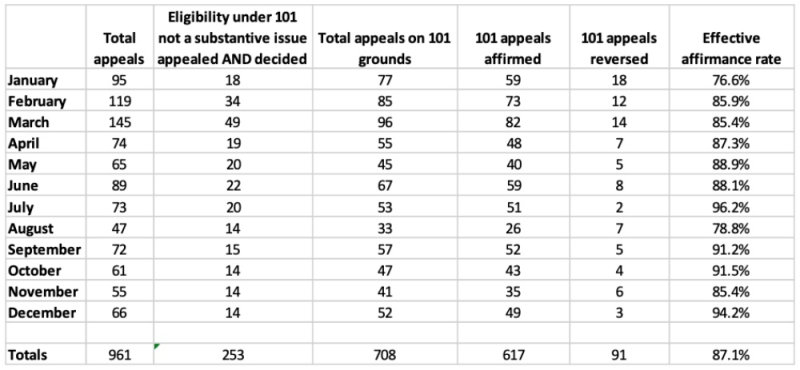To Make the U.S. Patent System More Efficient, Let’s Obviate Obviousness
“Refusing to compensate these inventors with a temporary monopoly power when they have satisfied a novelty standard jades their spirits and throws our system of innovation out of balance.”
Recovering money from users of technology requires movement on the part of inventors of technology. For example, receiving compensation from those who use patented designs without permission often requires patent owners (e.g., inventors) to send cease and desist letters, file complaints in federal district court, and at times endure patent litigation to its completion. All of these movements require the inventor to possess a patent. In this manner, one way to view the patent is as a vehicle in commerce.
Now, when it comes to issuing these vehicles, today’s patent system measures inventiveness based on two criteria: novelty and obviousness. Regarding novelty, no one can suggest that this requirement has flaws. Novelty is derived directly from Article I Section 8 Clause 8 of the U.S. Constitution. That clause states, “To promote the Progress of Science and useful Arts, by securing for limited Times to Authors and Inventors the exclusive Right to their respective Writings and Discoveries.” If an invention is novel, it arguably is a discovery. However, when it comes to obviousness, the Constitution does not provide direct support for the position that discoveries be a predetermined measure different than what has previously been discovered. As a result, obviousness is a flaw in our patent system.
A Fatal Flaw
Sticking with the vehicle metaphor, showing that the engine of the vehicle (e.g., the claims of the patent) is different than every other engine ever invented is how novelty is satisfied. For obviousness, the law considers the differences between the engine of the vehicle and other engines as understood by someone else. When the opinion of this other person is accounted for in this manner, a bedrock of property law becomes disturbed. This bedrock is the notion that one who is first in time has stronger property rights than one who is later in time. It is an ancient and instinctual notion that governs much in society, including determining who is entitled to a patent, and it is disturbed when inventors who are first in time are encouraged to discriminate their discoveries before patenting them. In a competitive business world, this discrimination is fatal.
As a result, it is in an inventor’s nature to obtain vehicles, or stated differently, to obtain the temporary monopoly power of patents. Elihu Thomson, who was listed as an inventor on hundreds of patents in the late 19th and early 20th centuries, and who founded a number of major electrical companies, summed up an accepted view on the importance of patents. He said, “Shall an invention be patented or donated to the public freely? I have known some well-meaning scientific men to look askance at the patenting of inventions, as if it were a rather selfish and ungracious act, essentially unworthy. The answer is very simple. Publish an invention freely, and it will almost surely die from lack of interest in its development. It will not be developed, and the world will not be benefited. Patent it, and if valuable, it will be taken up and developed into a business.”
To that end, inventors seek patents because during the invention process, they use energy (e.g., time, money, resources, etc.) to invent. Without patents, the inventor and the business world with which the inventor competes will both be able to use the invention. All else being the same, it is the inventor alone who is left with less total energy than before the invention was invented. Enter the patent. Patents exist to replenish the inventor’s lost energy by providing a form of compensation, namely the temporary monopoly power. However, despite their benefit, patents have flaws (e.g., obviousness).
More specifically, by requiring that an obviousness test be satisfied, today’s patent system tells inventors that certain inventions are not patentable because someone else doesn’t think they are a predetermined amount different than what has already been discovered, even though they are new. As a result, obviousness is akin to: a) not issuing a vehicle to an inventor, even though the engine they have built is not the same as any other engine, or rather, even though they have not committed theft; and b) telling inventors they cannot make any moves toward others who have copied their design (e.g., would be infringers). This is problematic. None of the engines of these vehicles were made freely. They were all built by expending energy. Refusing to compensate these inventors with a temporary monopoly power when they have satisfied a novelty standard jades their spirits and throws our system of innovation out of balance.
Solutions
Now, while doing away with obviousness outright would appease many inventors and patent practitioners, it would present some serious problems for commerce if other changes were not made to the system. For example, many more vehicles would be on the road, which would cause increases in traffic, accidents, potholes, and the like. In other words, the U.S. Patent and Trademark Office (USPTO) would be overrun by new patent filings, and the courts would be bombarded with new lawsuits concerning the overabundance of newly issued patents, should only a de minimis novelty standard be required.
The solution to these problems is to enact legislation that creates an alternative utility patent, one that does not require an obviousness standard to be satisfied but that expires after only, for example, 10 years instead of 20 years. Allowing such a vehicle on the road would impact traffic in several ways. First, not requiring obviousness to be satisfied would likely cause many more vehicles to be on the road. However, each of these vehicles would exit the road after 10 years instead of 20 years. Second, because each of these vehicles would not be required to satisfy obviousness, they would travel at a faster speed than traditional vehicles. For example, evaluating invalidity of such patents when cease and desist letters are sent and also during litigation would be much quicker because cumbersome obviousness determinations would not need to be made. Finally, many vehicles that would ordinarily be issued with 20-year patent terms might instead choose to sacrifice patent term in order to have claims that were not required to satisfy obviousness.
Accordingly, the alternative vehicle would unquestionably make traffic flow more dynamic (e.g., not necessarily more congested as many might argue). Additionally, because inventors are powerless to stop theft without traffic flow, and theft of an inventor’s design is dynamic (e.g., public disclosure of patents instantly reveals secrets to and tempts everyone), it follows that stopping such dynamic theft can only be done with dynamic traffic flow. Further yet, the more dynamic the flow, the more likely inventors will be able to recover just compensation from infringers, provided order is maintained on the road. For more on the need to employ alternative patents to ensure inventors receive just compensation, see here.
Regarding the above-mentioned alternative vehicle, which does not require obviousness to be satisfied and has a shorter term, one way to maintain order on the road would be to do a pilot program at the USPTO where only, for example, 10,000 of these alternative patents could be created each year for a 10-year period. In turn, data corresponding to how many of these patents wound up in litigation and how quickly such litigations were resolved could be processed by a computer model to forecast future traffic flow, such as if the pilot program were eliminated and there were no cap on how many of such vehicles the USPTO could issue. Finally, and most importantly, necessary energy via the monopoly power afforded by the alternative vehicles could be provided to inventors such as those mentioned above—energy which would offset losses previously caused by obviousness. Thus, our system of innovation could persevere, and obviousness could begin to be obviated.
Image Source: Deposit Photos
Author: tashatuvango
Image ID: 31248541






